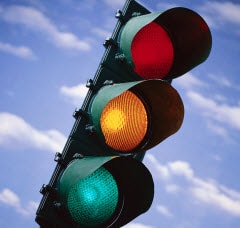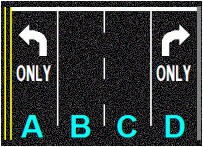
Breaking traffic laws: most of us are guilty of doing it. Sometimes it's because we are simply unaware of a law and sometimes it's because we believe we can get away with it. Read on to find out some of the most commonly violated traffic laws in Texas - you just might learn a thing or two.
Flashing Yellow Signals
Do you come to a stop at flashing yellow lights? Particularly when a traffic light with red, yellow and green signals is flashing yellow? If so, you are in violation of the law. Many people do not know that they should keep driving, although with caution, through an intersection when there is a flashing yellow light. Stopping can be dangerous because others who know the law may not be expecting you to stop, and this heightens the chance of a collision occurring.

Passing School Buses
In most cases, when a school bus is stopped, traffic heading in both directions is required to stop. There are only a few exceptions to this rule, the first of which is that you can keep going if there is a physical median between you and the bus. In addition to this, if a bus comes to a stop and its hazard lights or yellow alternating lights flash, you do not have to stop and can simply proceed with caution. The easiest thing to remember is that if a school bus is flashing alternating red lights located near the top of the bus, you must stop, while other lights are merely signals to drive cautiously.
Stopping in Intersections
This is a very commonly broken law and one that can be incredibly frustrating and even dangerous to other drivers around you. If traffic is heavy at an intersection and you realize that you will not be able to go all the way through the light, you must stop at the line and wait for traffic to move ahead - even during a green light. If you pull into the intersection to wait, you may receive a ticket if an officer catches you. Also, when you do this, you may be blocking drivers on the opposite side of the street from being able to make left turns. Additionally, you risk getting stuck in the middle of the intersection when the light goes red.

Turning at Intersections
If on a street like the one in this example, you are not allowed to turn from lanes B or C. Other turning rules include having to turn into the right lane only when you make a right, and not into the middle lane, for example. This does not apply when making a left, though one must watch out for double or dual turn lanes and make sure to stay in their designated lane, which is normally denoted by pavement markings or signs.
Pulling Forward Before Turning Left
When you're waiting in a left turn lane with no green arrow, you should move into the intersection approximately 1/4 of the way. By moving your car forward, even if you end up turning when the light is yellow or red, you are not breaking the law because you legally entered the intersection on a green light and other traffic must let you clear the intersection. If you do not pull forward and then attempt to make a turn when the light goes yellow or red, you risk getting a ticket if caught.
Driving on the Shoulder
In Texas, it is actually legal for cars to drive on the shoulder to allow a faster car to pass, as long as the shoulder is wide enough, uncluttered and free of stopped or broken down cars. It is not legal for cars to drive on the shoulder to pass another vehicle, unless that vehicle has stalled or slowed down in the main lane to turn left, in which case you can drive on the right shoulder to go around.